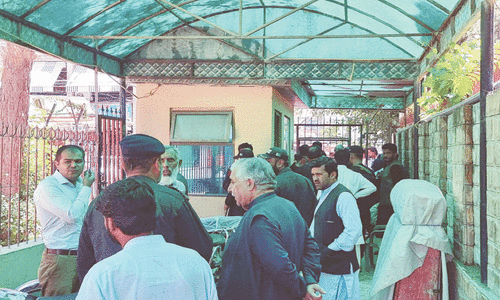ISLAMABAD, Sept 16: Water quality of the Simly, Rawal and Khanpur dams is being degraded by various kinds of pollutants being discharged into the drinking water reservoirs meant for the twin cities of Rawalpindi and Islamabad, Dawn has learnt.
A year-long monitoring of the water carried out by the Pakistan Environmental Protection Agency (Pak-EPA) from April 2004 to February 2005 found that the dams were increasingly becoming ‘Eutrophic’.
An environmentalist at the agency explained to Dawn that the slow aging process during which a lake or estuary evolves into a bog or marsh and eventually disappears is called eutrophication.
During eutrophication, the lake becomes so rich in nutritive compounds, specially nitrogen and phosphorus, that algae and other microscopic plant life become superabundant, thereby choking the lake and causing it to eventually dry up.
Eutrophication is accelerated by discharges of nutrients in the form of sewage, detergents and fertilizers into the ecosystem.
In response to a question, the environmentalists said, greenish look of water means eutrophication.
It enhances plant growth, often called an “algal bloom” reduces dissolved oxygen in the water when dead plant material decomposes and can cause other organisms to die.
Nutrients can come from many sources, such as fertilizers applied to agricultural fields, suburban lawns, deposition of nitrogen from the atmosphere, erosion of soil containing nutrients, sewage treatment plant discharges and human and animal wastes.
With the increased eutrophication, the level of dissolved oxygen (DO), an important component of drinking water is decreasing in these dams, the report revealed.
Water with a low concentration of dissolved oxygen is called ‘hypoxic’. The EPA official said constructions without proper sewerage system in the catchment areas of these water reservoirs were the major source of water contamination.
In the case of Rawal Lake, unabated construction is going on upstream both for residential and commercial purposes, which, he warned, would be a continuous source of water pollution. “This is something very serious and if not controlled immediately will have far reaching health impacts on the end-users”, he said.
Over the last few years, real estate business is in full swing and people are heavily investing in this sector under the direct supervision of government machinery. The mandatory environmental impact assessment (EIA) is required under the Pakistan Environmental Protection Act, 1997, for all such projects, but unfortunately nobody bothers about it, the source said.
“Everytime we come to know about such housing schemes, we ask them to get mandatory environmental clearance. However, hardly anybody responds,” the agency official said. Utilization of septic tanks was one of the solutions at individual level to neutralise the pollutants. Establishment of treatment filter plants was also recommended, he said.















































Dear visitor, the comments section is undergoing an overhaul and will return soon.